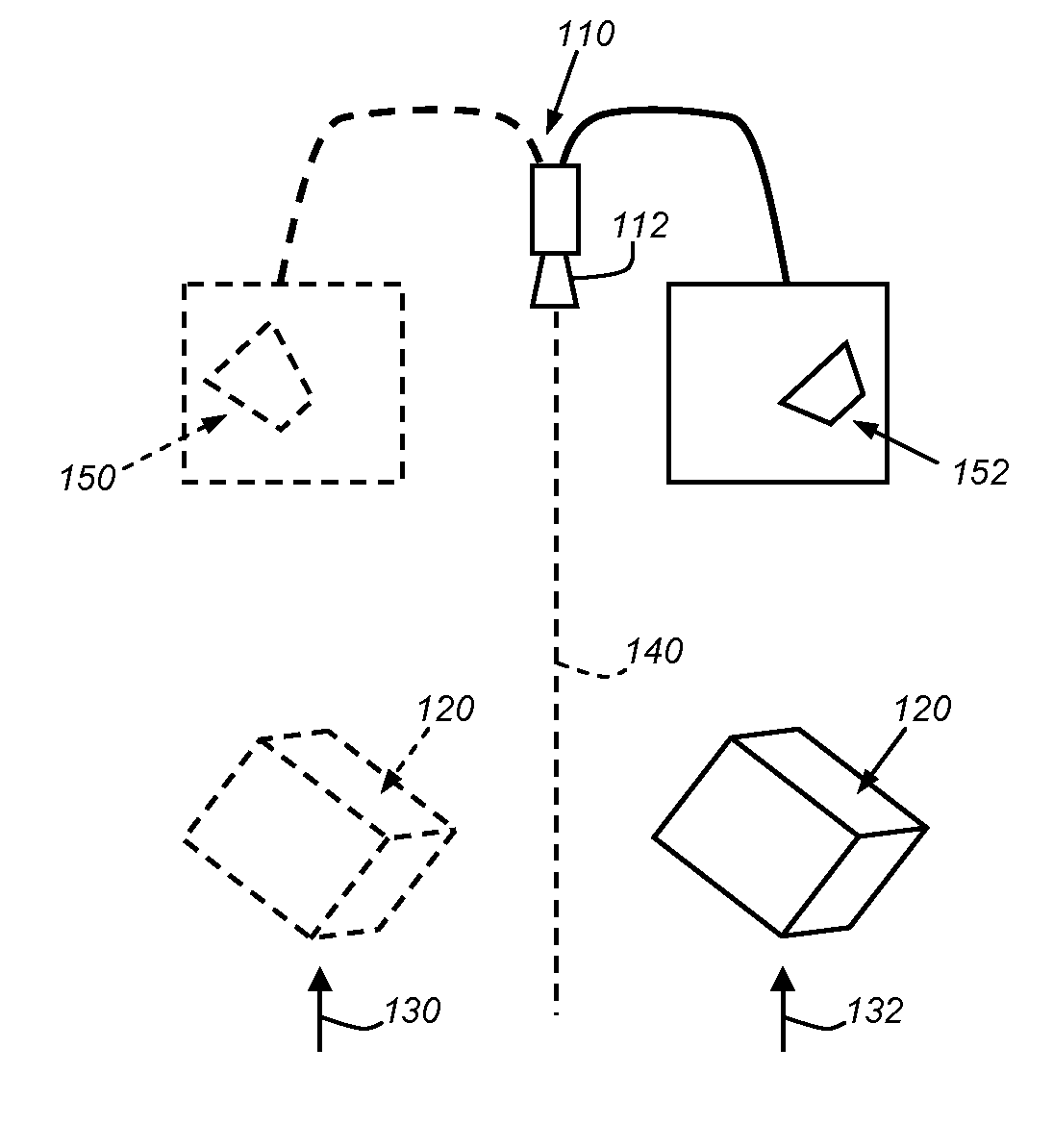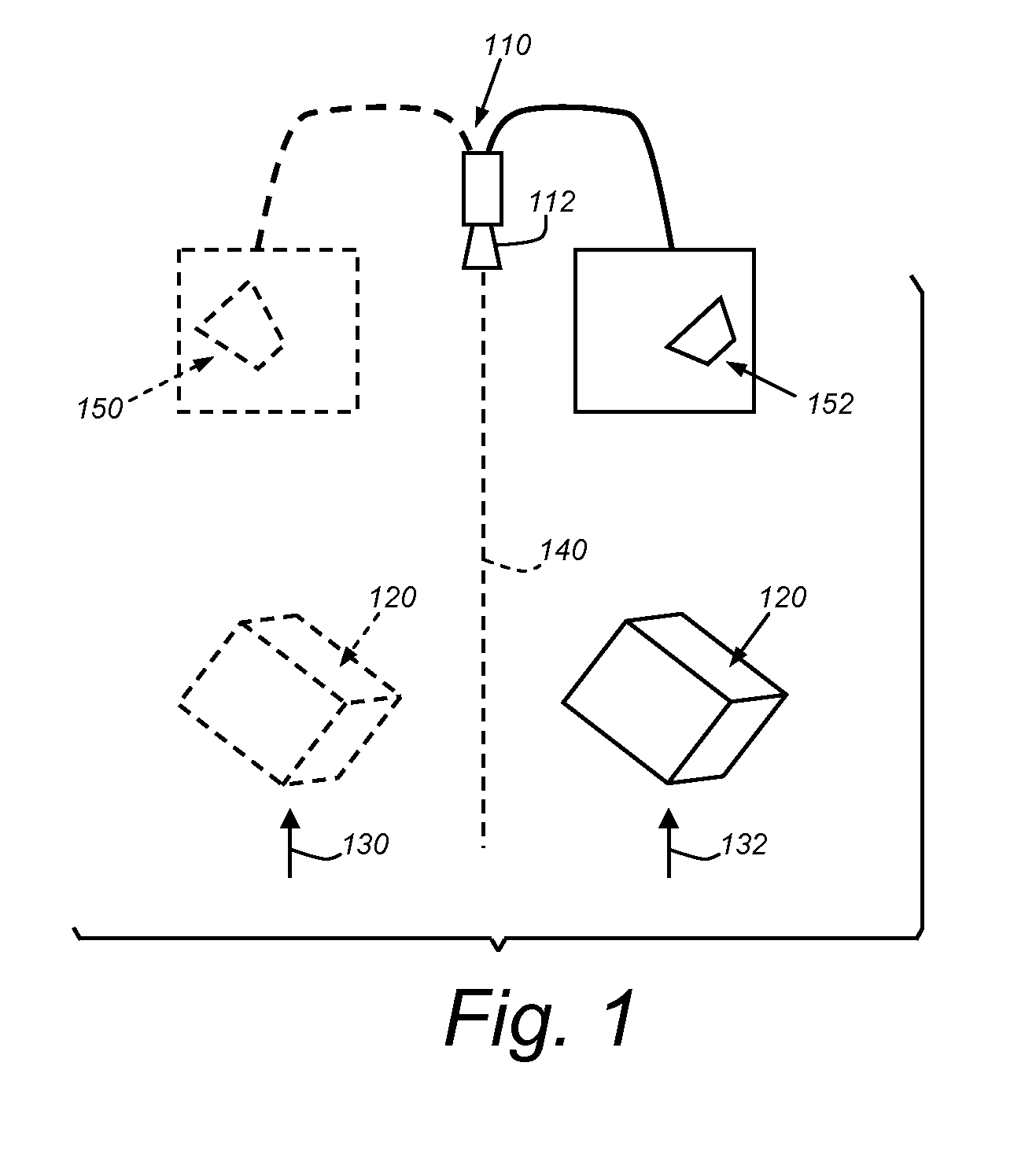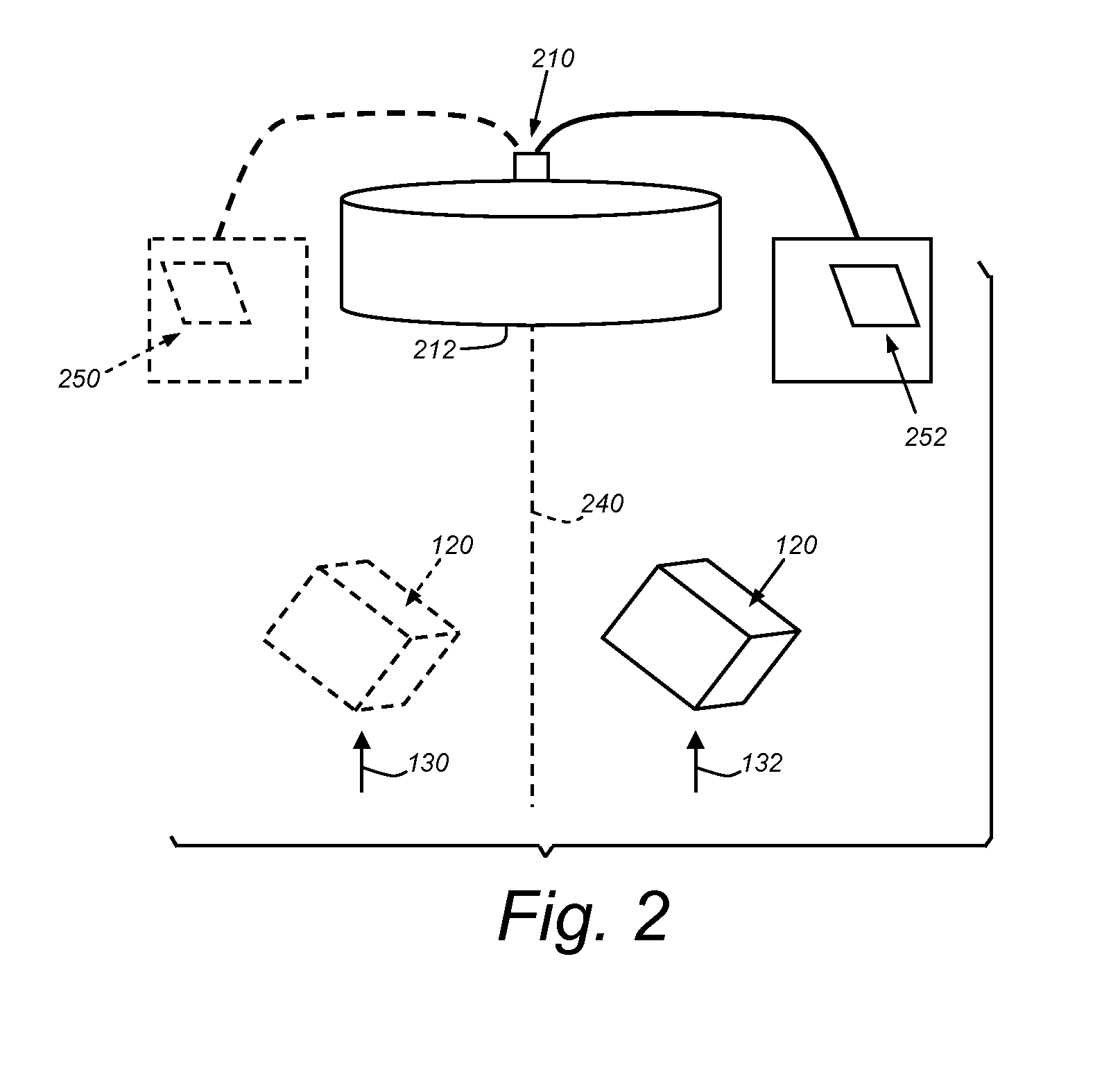System and method for finding correspondence between cameras in a three-dimensional vision system
a three-dimensional vision system and camera technology, applied in image analysis, image enhancement, instruments, etc., can solve the problems of more computation and processing overhead, limit the accuracy of stereo vision systems, and reduce the accuracy of overall pose determination process, so as to improve the speed and accuracy of the overall pose determination process.
- Summary
- Abstract
- Description
- Claims
- Application Information
AI Technical Summary
Benefits of technology
Problems solved by technology
Method used
Image
Examples
Embodiment Construction
[0028]I. System Overview
[0029]With reference to FIG. 2, a camera 210 is shown with an attached telecentric lens 212 of conventional design. The lens, 212 can have any parameters appropriate to the field of view of the object 120, which similar to that of FIG. 1, moves between two positions 130 and 132 with respect to the camera's field of view (centered about axis 240). Telecentricity (as opposed to perspective projection) has the advantage that the object's appearance remains essentially unchanged as it moves through the field of view. As shown, the resulting images 250 and 252 have a similar shape and appearance due to the elimination of perspective effects. This is achieved because the rays passing through a telecentric lens are parallel, as opposed to crossing, as is the case with a conventional perspective optical arrangement.
[0030]It should be noted that the illustrative telecentric lenses shown herein are shown as symbolic representations and not generally drawn to scale. Mor...
PUM
 Login to View More
Login to View More Abstract
Description
Claims
Application Information
 Login to View More
Login to View More - R&D
- Intellectual Property
- Life Sciences
- Materials
- Tech Scout
- Unparalleled Data Quality
- Higher Quality Content
- 60% Fewer Hallucinations
Browse by: Latest US Patents, China's latest patents, Technical Efficacy Thesaurus, Application Domain, Technology Topic, Popular Technical Reports.
© 2025 PatSnap. All rights reserved.Legal|Privacy policy|Modern Slavery Act Transparency Statement|Sitemap|About US| Contact US: help@patsnap.com



